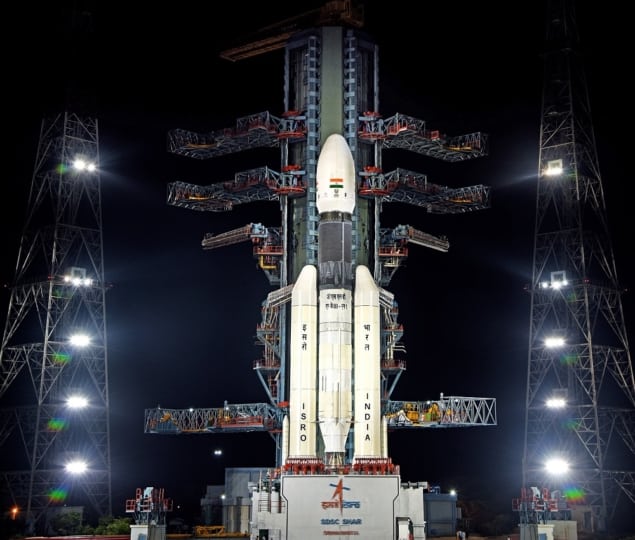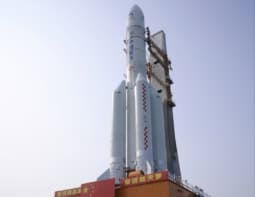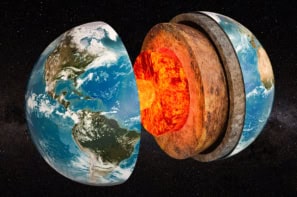
India’s second Moon mission has been successfully launched today from Sriharikota island in the Bay of Bengal. Costing $141m to build and launch, Chandrayaan-2 consists of an orbiter, lander and rover and was fired into space by India’s Geosynchronous Satellite Launch Vehicle MK-III.
India’s first mission to the Moon – the Chandrayaan-1 orbiter – was launched in 2008 and featured 11 payloads, six of which were built by outside countries. Chandrayaan-2’s orbiter will operate for two years and will contain nine payloads, most built by Indian institutes. One foreign payload will be NASA-built reflecting mirrors that will be used to calculate the Earth–Moon distance.
There will 15 terrifying minutes when the lander separates and before it soft lands on the Moon
Kailasavadivoo Sivan
Chandrayaan-2’s lander, dubbed Vikram, is set to touch down on the Moon in September between the craters Manzinus C and Simpelius N, close to the lunar south pole. “The site is at a latitude of 70.9° south [whereas] previous missions by other countries landed close to the equator,” ISRO chairperson Kailasavadivoo Sivan told Physics World. The lander’s three instruments will search for moonquakes as well as examine the Moon’s thermal properties and plasma density on the surface. The orbiter, meanwhile, will search for water, identify minerals and study the composition of the surface and the tenuous lunar atmosphere. India launches first lunar mission
“It is the most complex mission ever to be undertaken by the Indian Space Research Organisation (ISRO),” says Sivan. “There will 15 terrifying minutes when the lander separates and before it soft lands on the Moon.”
The lander will enclose a six-wheeled rover called Pragyan that will make sorties for 14 Earth days. It will carry laser and X-ray spectrometers to study the lunar surface rocks and soils near the landing site. “The giant South Pole- Aitken Basin was an early giant impact on the lunar far side, which then formed a large ridge near the south pole even on the near side, which Chandrayaan-2 will be able to explore,” says Bernard Foing, director of the International Lunar Exploration Working Group.



